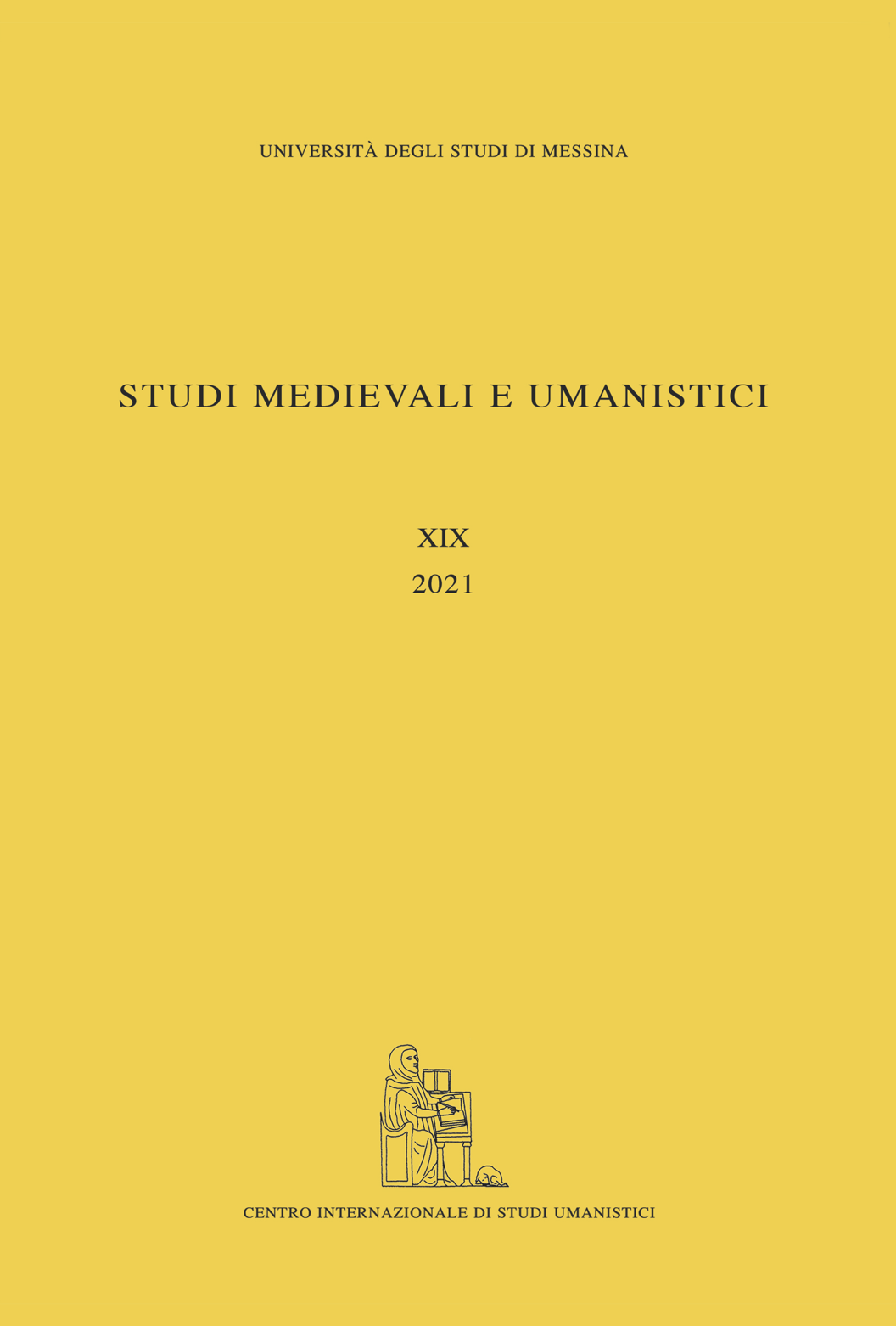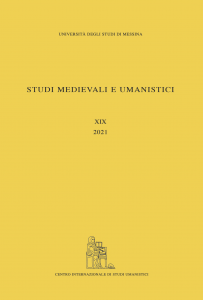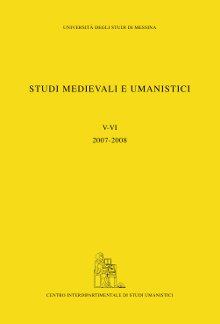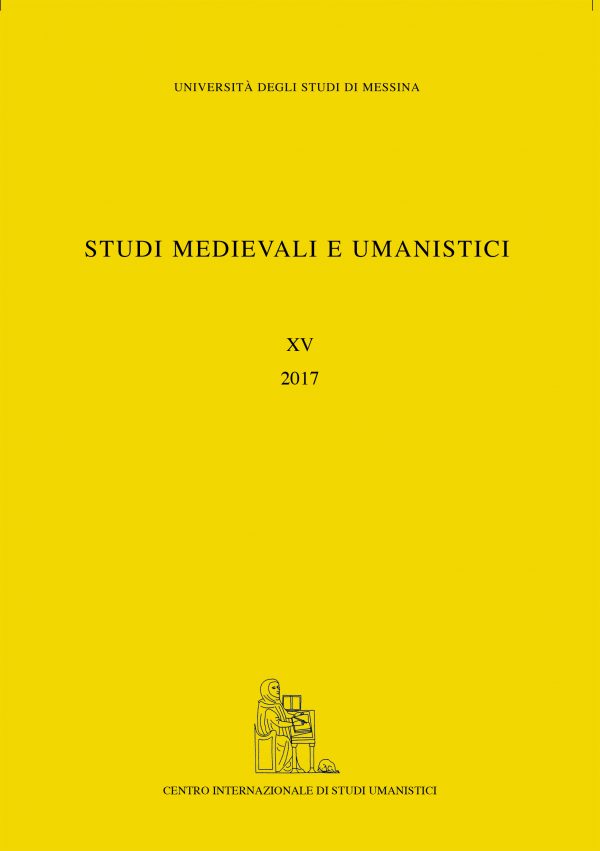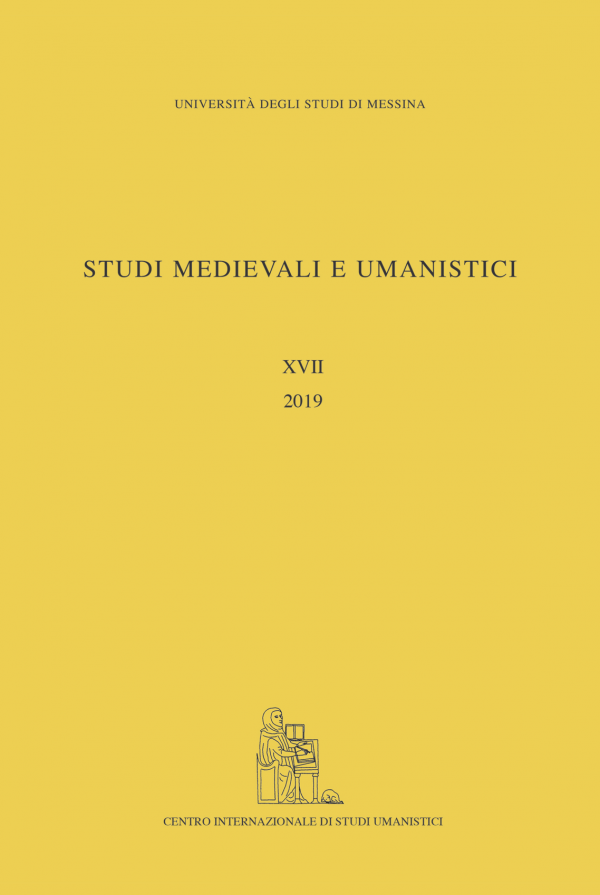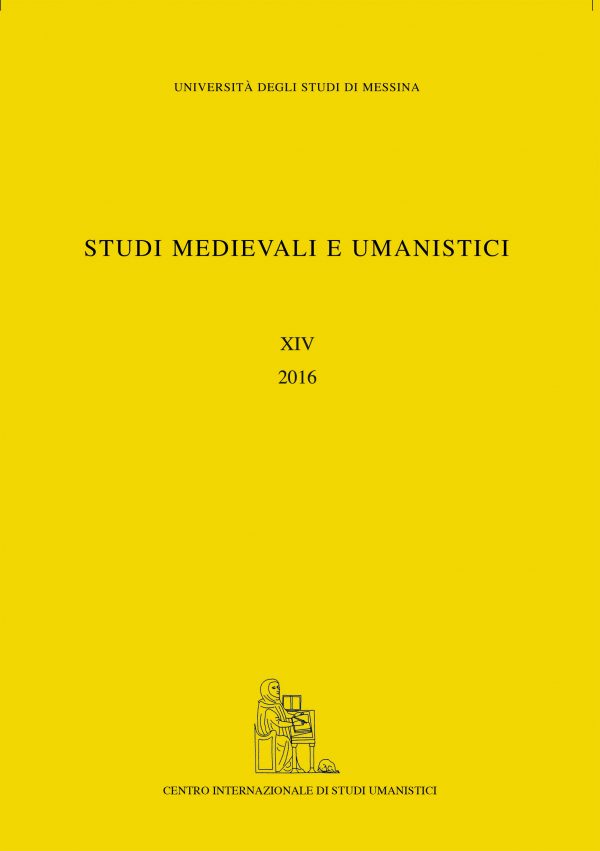Descrizione
XIX (2021)
Messina, Centro Internazionale di Studi Umanistici, 2021, 320 pp., 25 cm.
ISSN 2035-3774
SOMMARIO
Aldo Onorato, Il volgarizzamento dell’ultima epistola di Coluccio Salutati a Giovanni da San Miniato
Giuseppe Nastasi, Natale Conti traduttore del Περὶ σχημάτων di Alessandro
L’OPERA DI PETRARCA. CANTIERI DI LAVORO. Seminario internazionale (Messina, Accademia Peloritana dei Pericolanti, 20-21 febbraio 2020)
Silvia Rizzo, Personaggi ‘nascosti’ negli epistolari di Petrarca
Silvia Rizzo, L’epistola di Lombardo della Seta a destinatario ignoto
Péter Ertl, Fra Giovanni Colonna e una ignota redazione γ della Familiare II 9
Marco Petoletti, Il De vita solitaria e le sue fonti nascoste
Sara Vetturelli, Il portale Petrarca online
Paola Vecchi Galli, Per le Rime disperse di Francesco Petrarca: un colpo d’occhio sul ms. parmense 1081
Giulia Perucchi, Il maestro di Cicerone. Per l’esegesi di Rem. I 80
Giulia Perucchi, Nuove prospettive sul De remediis utriusque Fortune (con l’edizione di Rem. I 80-81 e II 39-40)
Indice dei manoscritti e delle fonti d’archivio
Indice dei nomi
ABSTRACT
ALDO ONORATO, Il volgarizzamento dell’ultima epistola di Coluccio Salutati a Giovanni da San Miniato
Coluccio Salutati’s last epistle to Giovanni da San Miniato (25 January ‹1404›), which closes a heated dispute with the Camaldolese monk and represents the theoretical summa of the great humanist’s defense of ancient poets and classics, was translated into Italian vernacular by Nicolò Castellani in the first decades of the fifteenth century. This poor work has come down to us through a single manuscript (Florence, Bibl. Riccardiana, 1939), unfortunately marred by numerous errors only partially amended by the edition prepared without any philological rigor by Casimiro Stolfi in 1867. My essay makes available to scholars the first critical edition of Castellani’s Italian vernacular translation, which is now finally purged of mendes and omissions and, thus, allows a detailed examination of its features and of its impact on the fortune of Salutati’s epistolary short treatise.
SILVIA RIZZO, Personaggi ‘nascosti’ negli epistolari di Petrarca
Drawing on her work towards a chronology of Petrarch’s life for the portal Petrarca online, the author suggests connections between different mentions of persons unknown, which can lead to their identification or at least to better knowledge of them. The persons discussed are Giovanni Mandelli; Francesco di Giovanni da Firenze; ‘Martinus theutonus semitalus’, who travelled between Venice and Prague.
SILVIA RIZZO, L’epistola di Lombardo della Seta a destinatario ignoto
In 1961 E. Pellegrin discovered a letter of Lombardo Della Seta, and in 1963 she found it in another manuscript. It was published in 1964 by Billanovich-Pellegrin and then again by Billanovich in 1966. The present paper gives a new critical edition with translation and commentary. The letter, which yields a large amount of valuable information about the fate of Petrarch’s works after his death, does not name the addressee. The first editors argued that it was addressed to Giovanni Dondi dall’Orologio and consequently suggested a date of 1380 or 1381. The identification with Dondi was rejected by Martellotti, who dated the letter to 1376 or 1377. The year 1377 was supported by Fera with arguments from the tradition of Africa. The present paper accepts 1377 and tentatively proposes for the addressee the name of Donato degli Albanzani.
PÉTER ERTL, Fra Giovanni Colonna e una ignota redazione γ della Familiare II 9
The aim of this study is to compare a short passage of Giovanni Colonna’s Mare historiarum (VII 78) with Petrarch’s Familiares II 9, 26, with the intention of proving that the historical work of the learned friar contains a fragment of the precanonical redaction of the epistle, which was abundantly reworked by Petrarch in the early 1350s.
MARCO PETOLETTI, Il De vita solitaria e le sue fonti nascoste
Petrarch worked many years to compose his De vita solitaria: the dedication copy was sent to Philippe de Cabassole in 1366, twenty years after he began to write this treatise. Identifications of sources and information obtainable from Petrarch’s correspondence allow to discover the progressive increase of De vita solitaria, as it was furthered by new readings. Especially in order to sketch biographical portraits of the viri illustres solitarii in book II, Petrarch drew on a large stock of patristic and medieval sources. Hagiographic texts, including the Martyrology of Usuardus, prooved to be relevant for this topic and their study sheds light on a section of Petrarch’s library, which was left little investigated up to now.
PAOLA VECCHI GALLI, Per le Rime disperse di Francesco Petrarca: un colpo d’occhio sul ms. parmense 1081
In the light of the latest proposals of criticism and philology on so called Petrarch’s ‘rime disperse’, this paper formulates some general reflections on Ms. Parmense 1081, emphasizing its Tuscan origin, the hybrid contents and the unreliable aspect regarding the attributions, and making some methodological questions related to the catalogue of these poems.
GIULIA PERUCCHI, Il maestro di Cicerone. Per l’esegesi di Rem. I 80
This paper sets out to shed light on the meaning of an obscure passage in the dialogue The Excellent Teacher included in Petrarch’s De remediis utriusque Fortune (I 80). In a short list of ancient authors who either had no distinguished teachers to learn from or surpassed them, Petrarch dismissively mentions Cicero’s preceptor: in their commentaries previous scholars have never tried to establish his identity. This contribution suggests that Cicero’s mediocre teacher is A. Licinius Archias, the poet he defended in the famous oration discovered by Petrarch himself in 1333.
GIULIA PERUCCHI, Nuove prospettive sul De remediis utriusque Fortune (con l’edizione di Rem. I 80-81 e II 39-40)
This paper focuses on four chapters of Petrarch’s De remediis utriusque Fortune (I 80-81 and II 39-40) concerning the world of the school, pupils and teachers. The first section offers an Introduction to the content of the dialogues and to Petrarch’s perspectives on teaching and learning; the second consists of a new examination of the manuscript tradition. The study of a selection of witnesses has made it possible to formulate a new theory about the evolution of De remediis and its textual transmission: here for the first time, a new version – older than those known until now – is identified. A significant group of author’s variants is analysed with close attention. The article also provides an edition of the Latin text with an Italian translation and commentary.

